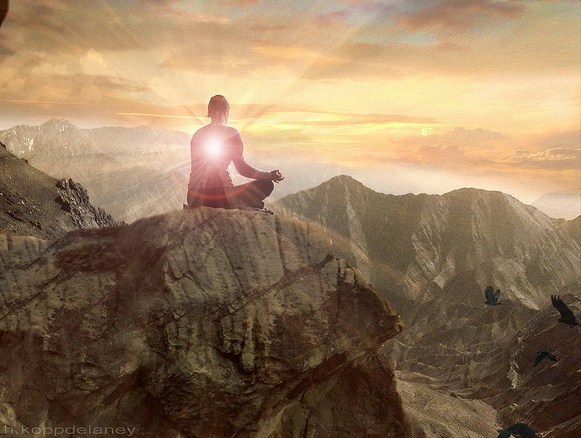
“Happiness is not a matter of intensity but of balance, order, rhythm and harmony.” ~Thomas Merton
“If you have aspirin, please take it now. It might be bitter, but if you’re having a heart attack, it will help.”
If I wasn’t already anxious, hearing this advice the nurse gave me certainly didn’t help. Fifteen minutes later, I was in the emergency room—a 34-year-old, physically-fit, overachieving, workaholic, enablingcontrol freak—having the classic symptoms of a heart attack.
As I sat on the hospital bed, breathing as deeply as I could into what was happening, my mind started to race: Was it being unwittingly thrust into the role of referee between my Dad and brother last weekend?
Was it yet another significant transition in an already fast-paced and changing work environment?
Was it worrying about where to get the money for my uninsured mother to get the health care she needed for her pre-existing condition?
What was to blame?
In the end, no one was to blame. There was just me, being completely out of balance with myself and lacking any harmony with the world around me.
The dearth of literature on work/life balance, 4-hour-work weeks, and whole-person energy management are symptoms of a world out of balance. We are doing more, or at least, trying to do more, faster and better.
For many people, life consists of trying to get the kids dressed and ready for school; checking email on our smart phones while dropping them off; attending meeting after meeting at work; picking up fast food because we’re too tired to cook; and collapsing into the bed at the end of the day, wondering how we’ll ever squeeze in time for ourselves or our significant others.
And oftentimes, at the end of it all, we vow we’ll do something different tomorrow.
It’s not that there’s anything wrong with us. The world itself is fundamentally different. We are digitally connected to our friends, families, and workplaces 24/7, and constantly bombarded with information.
How, then, are we supposed to maintain any semblance of balance and harmony?
First, what does it mean to have balance and harmony? And how are those two distinct from each other?
Balance and harmony are two sides of the same coin. Both are about our relationship to who we are and what is most important to us.
Balance is about our inner relationship to who we are and what matters. On the other hand, harmony is about the outer relationship between who we are and the world around us.
When we are out of balance and harmony, we experience stress. Like the phenomenon of friction in the physical world, stress is the result of resistance. It is about resisting our life as it is. And like friction, we get burned in the process.
So how we do we maintain balance and harmony? It starts with two simple steps.
1. Be present to reality.
If stress is the result of resistance to life, we need to first develop and expand our capacity to be present to reality. Our minds are so busy that we tend to skip over “what is” and go to straight to our evaluations and stories about “what is.”
It’s not that “She said such and such…” but rather “She clearly doesn’t care, because she said such and such…”
When we find our minds rushing to the next judgment, we can get present by focusing on one of four things:
- The body—i.e.: What is going on in my body right now? Is my heart racing? Is my breathing shallow? Am I tensing up?
- Our feelings—i.e.: How am I really feeling? Am I angry? Disappointed? Frustrated?
- The mind—i.e.: What thoughts are running through my head at this very moment?
- The world of phenomenon—i.e. What am I noticing going on in the world around me? What noises, sights, sounds, etc., am I experiencing in this moment?
When we can just notice these things without actually having one of them grab a hold of us, we are present to reality. And when we can just be with reality, we see that most of the time, the stress we experience is a creation of our minds responding to what is going on.
2. Become aligned with what you need.
Once we notice that we are out of balance or harmony, we need to restore alignment. Marshall Rosenberg, PhD, author of Nonviolent Communication: A Language of Life offers a good practice for this.
To get back to balance or harmony, we have to be able to identify our needs and make requests of others to address them.
Ask yourself: What would make a difference to me right now? Taking a walk to clear my head? Stepping away from a situation? Having a conversation to clear up a difference of opinion? Asking a friend for help?
We can achieve balance and harmony if we determine what it is we need and then take action to fill that need.
It wasn’t a heart attack I was having, so much as an acute anxiety attack. When I stopped to look at my life, I realized that all of the things that nourish me—yoga, meditation, dancing, creative writing—I had let slip from my life.
So I made time for those things. In fact, I began to structure my life around those things.
We’ll never completely eliminate stress from our lives. We’ll always have some reaction that will throw us off-kilter.
The trick is to improve how quickly we can stop and be present.
We experience balance and harmony when we get in touch with who we are and what matters most and then make those things a priority in our lives. Tired of feeling stuck? Let go of the past and create a life you love with the BayArt programs!
Did you enjoy this post? Please share the wisdom :)